
asherozero00/iStock/Getty Images
Razor bumps usually occur when recently-shaven hair curls back and grows into your skin, or if you shave hair too short and it becomes an ingrown hair. The skin reacts to these hairs as though they are foreign bodies and it becomes inflamed, explains the American Osteopathic College of Dermatology. Products containing glycolic acid, a type of alpha hydroxy acid, can help treat this problem.
Razor Bumps
Razor bumps are common in the beard area for people with very curly hair, particularly African Americans, according to the AOCD. When razor bumps appear there, the medical term is pseudofolliculitis barbae. These bumps also tend to develop in the armpits and along the bikini line. Razor bumps can cause pain, and they tend to look like sore pimples. If you get several, it can look like you've got acne. Razor bumps can last for months and, in severe cases, cause scarring.
Glycolic Acid
Glycolic acid occurs naturally in sugarcane, beets, and grapes and other fruits. The glycolic acid in skin care products typically is derived from sugarcane or is manufactured synthetically. Skin care product manufacturers may include glycolic acid in lotions, creams and other items to improve skin elasticity and firmness, increase collagen production, and decrease sun damage, fine lines and wrinkles, according to DuPont.
Razor Bump Products
Glycolic acid lotion at 8 percent strength is effective for healing razor bumps, according to the AOCD. Preparations of 10 percent and higher typically function as chemical peels for anti-aging improvements. Some razor bump products include other beneficial ingredients, such as chamomile for soothing effects.
Expert Insight
Research published in the October 1993 issue of "Cutis" investigated the effects of glycolic acid lotion on pseudofolliculitis barbae, treating one side of each participant's face with the lotion and the other with a placebo. The glycolic acid was significantly more effective than the placebo, with over a 60 percent decrease in the bumps. The participants were able to shave daily on the treated side without much skin irritation, solving a common problem with razor bumps.
Prevention
Once you've healed your razor bumps with a glycolic acid product, you may be able to prevent them in the future. The AOCD recommends not shaving when you can avoid it, and using an electric razor rather than a blade so you don't shave too closely. If you need to use a blade, soften the hair first with a hot, wet washcloth for five minutes, or use a preshave solution designed for this purpose. Then apply a lubricating shaving gel, British shaving oil or a prescription medicated shaving foam. Shave in the direction of the hair growth, and then rinse with warm water and apply a moisturizing after-shave product.
Related Articles

Tend Skin & Folliculitis

How to Keep From Getting Ingrown Armpit ...

How to Remove the Blade on a Schick ...

How to Clear Up Red Bikini Line Bumps
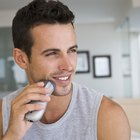
How to Treat Razor Burn with Tea Tree ...
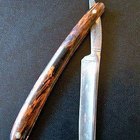
How Does a Razor Work?

Proper Way to Shave a Mustache

How to Get Smooth Shaved Legs When Hair ...

How to Heal an Inflamed Bikini Area

How to Get Rid of Razor Bumps With ...

Benzoyl Peroxide-Free Acne Products
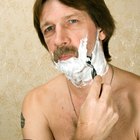
The History of the Gem Safety Razor

Remedies for Shaving Bumps on Inner ...

How to Take Care of Painful Ingrown Hair
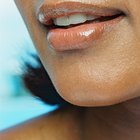
How to Cure Razor Burn on a Woman's ...

Shaving Armpits the Correct Way

How to Stop Facial Redness From Shaving
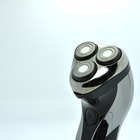
How to Shave With an Electric Razor

What Foods Provide Calcium D-Glucarate?

How to Get Rid of Razor Bumps Around ...
References
Writer Bio
Shelley Moore is a journalist and award-winning short-story writer. She specializes in writing about personal development, health, careers and personal finance. Moore has been published in "Family Circle" magazine and the "Milwaukee Sentinel" newspaper, along with numerous other national and regional magazines, daily and weekly newspapers and corporate publications. She has a Bachelor of Science in psychology.
Photo Credits
asherozero00/iStock/Getty Images